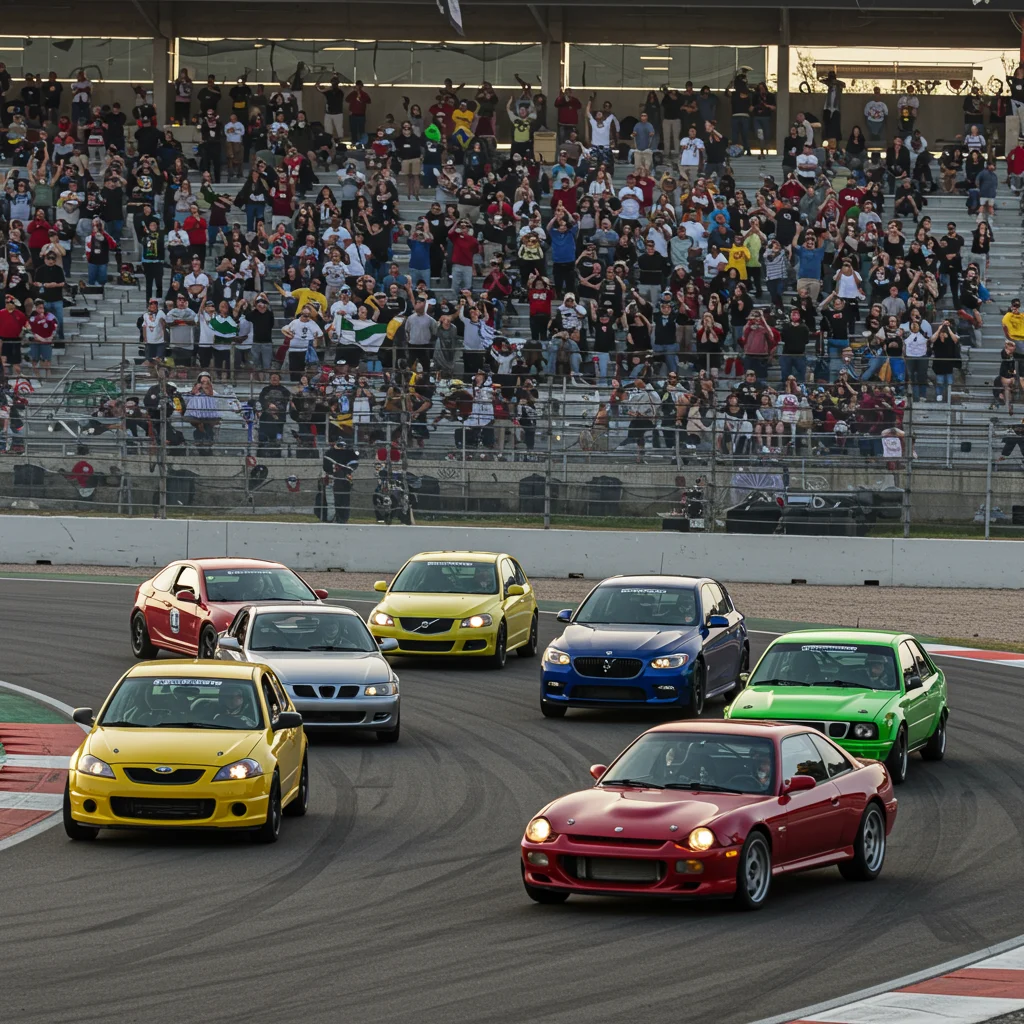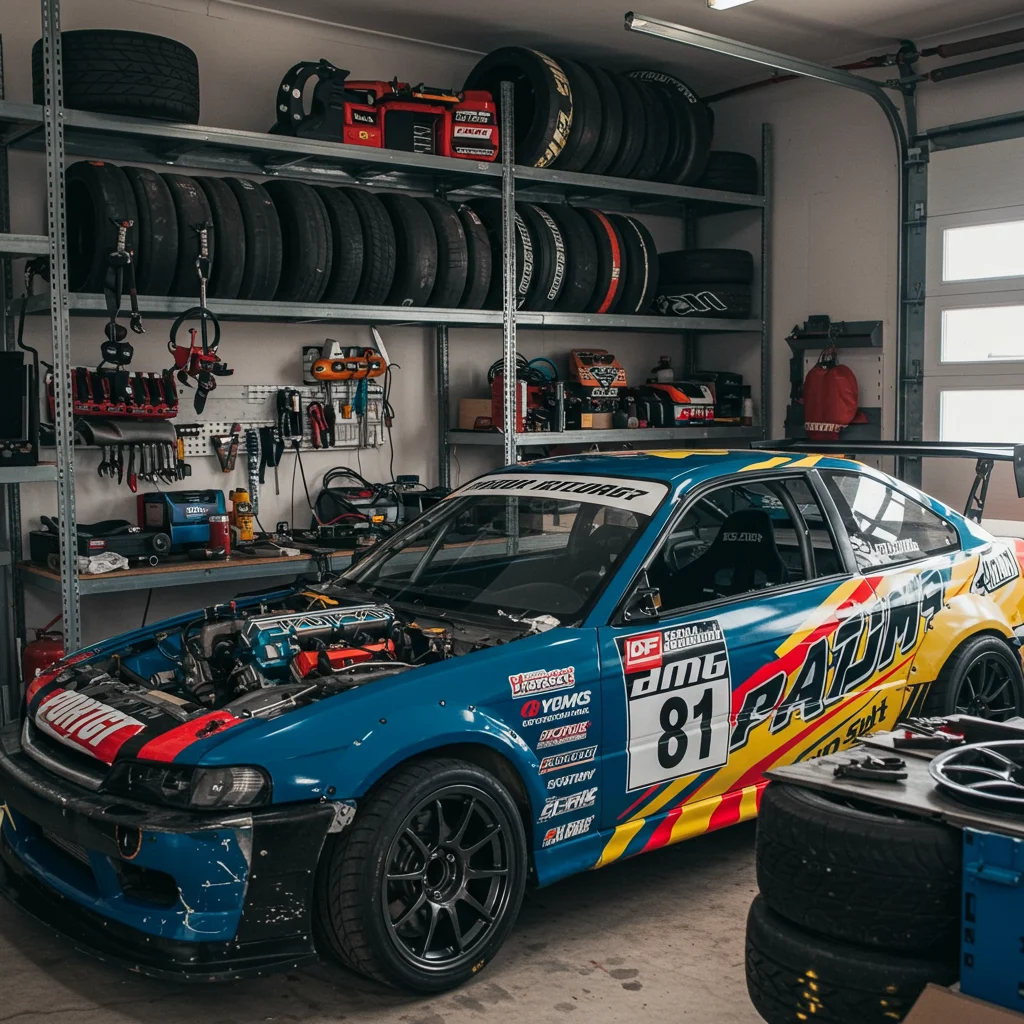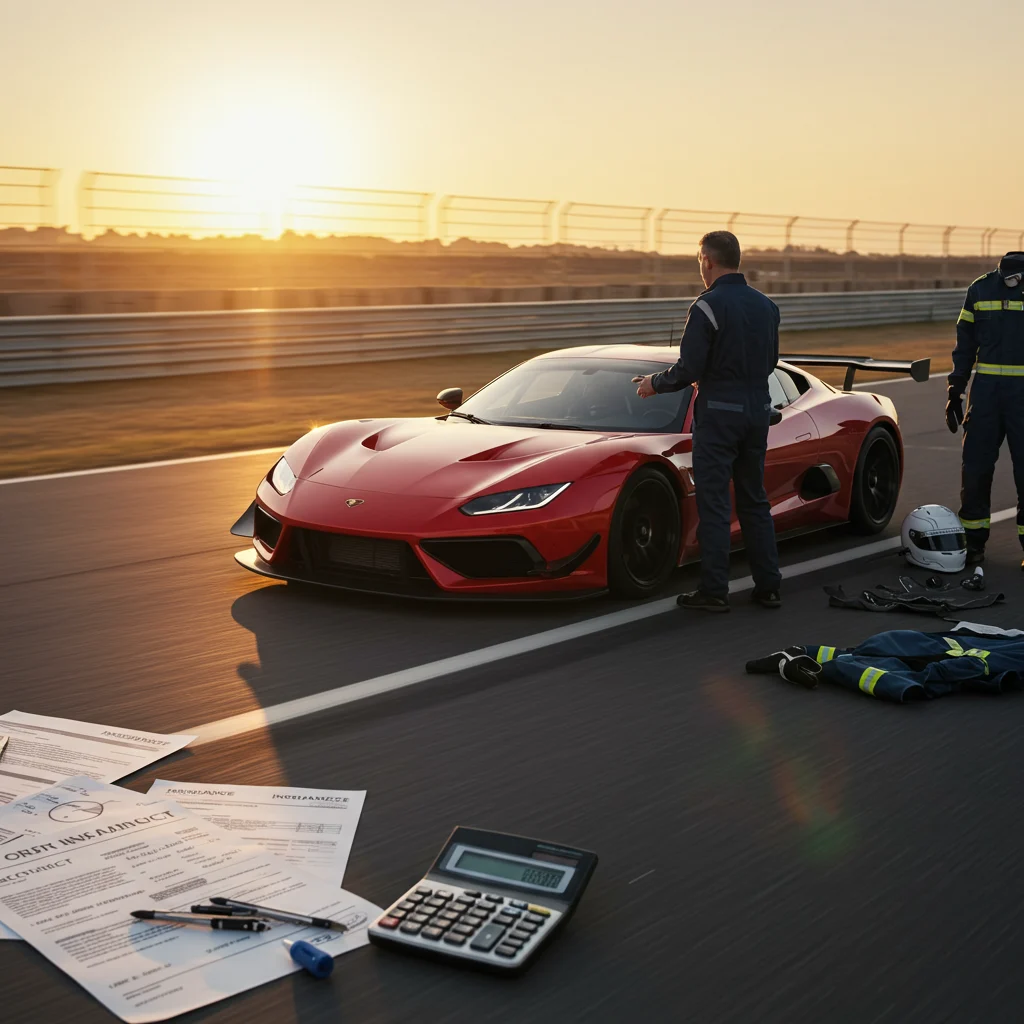Introduction: Why Cheap Cars Are Perfect for Racing in 2025
When we think of racing, visions of high-powered supercars often come to mind. Yet in 2025, the real heart of grassroots motorsport beats in the affordable segment. Cheap cars offer accessibility, lower stakes, and an opportunity to experience pure driving excitement without breaking the bank. For many enthusiasts, there’s nothing quite like the rush of wind through open windows, the tactile feedback of a nimble chassis, and the camaraderie of fellow racers—all made possible by budget-friendly vehicles.

The affordable racing car scene welcomes newcomers and veterans alike, leveling the playing field and fueling innovation. Let’s examine why these vehicles are the backbone of amateur racing and which models shine brightest in 2025.
What Defines a ‘Cheap’ Racing Car in 2025?
A cheap racing car in 2025 is more than just an inexpensive purchase. It’s a vehicle that balances low entry cost with robust performance potential, reasonable reliability, and manageable ongoing expenses. Typically, these cars are readily available on the used market, offer strong aftermarket support, and have proven themselves on tracks or autocross courses.

Affordability remains relative, but most enthusiasts consider cars under $20,000—often well below that threshold—as budget-friendly choices. The key is finding models that deliver excitement and learning opportunities without overwhelming financial risk.
How Has the Cheap Racing Car Market Changed in Recent Years?
Over the past decade, the landscape for budget racing cars has shifted dramatically. Rising used car prices, increased demand for enthusiast models, and evolving emissions regulations have impacted availability. Meanwhile, new generations of compact sports cars and hot hatches have entered the scene, while some older favorites are becoming harder to find in good condition.

Technology has also filtered down, with advanced safety and driver-assist features appearing in entry-level cars. For those interested in future developments, we explored what’s coming next in the next generation of cars for 2025–2030.
Key Criteria for Selecting the Best Cheap Cars for Racing
Selecting the right cheap car for racing requires a careful balance of several critical factors. Let’s break down what matters most for aspiring racers in 2025.

Affordability and Initial Cost
The initial purchase price remains the most obvious consideration. We look for cars that offer strong value and can be acquired without stretching your budget, leaving room for essential upgrades and maintenance.
Performance Capabilities
A good racing car must deliver engaging handling, adequate power, and a chassis that responds well to driver input. Even modest horsepower can feel exhilarating with the right setup and a lightweight design.
Reliability and Maintenance Costs
Reliability is vital when pushing a car to its limits. We favor models with proven durability and reasonable repair costs, so you can focus on the thrill of competition rather than constant repairs.
Aftermarket Support and Mod Potential
A strong aftermarket community opens doors to upgrades, advice, and camaraderie. Cars with wide mod potential allow you to tailor performance and style to your preferences, whether on the street or the track.
Availability of Parts
Easily sourced parts reduce downtime and keep costs manageable. We prioritize cars with a strong supply of both OEM and aftermarket components, making repairs and modifications straightforward.
Which Types of Racing Are Best for Cheap Cars?
Not every form of motorsport suits a budget build, but several disciplines welcome affordable cars and offer a fun, competitive environment.

Autocross
Autocross is ideal for cheap cars thanks to its low-speed, technical courses and minimal risk of damage. Drivers can test their skills and car control in a safe, accessible setting, making it a favorite among beginners.
Track Days
Track days allow drivers to push their cars on full-size circuits without the intensity of wheel-to-wheel racing. Affordable cars can still provide thrilling laps, especially when set up for handling and braking over outright speed.
Drag Racing
For those who crave straight-line acceleration, drag racing offers a simple and exhilarating challenge. Many budget models respond well to bolt-on upgrades that improve quarter-mile times.
Drifting
Drifting values rear-wheel drive, balance, and power delivery. Several cheap cars have become icons in drift culture, as highlighted in our look at the cars that starred in Tokyo Drift.
Rallycross
Rallycross brings together mixed surfaces and tight corners, rewarding agility and control. Many affordable cars, especially older hot hatches and compact sedans, excel in this discipline. For those just starting out, we’ve detailed the best choices in our guide to beginner rally cars.
Top 10 Best Cheap Cars for Racing in 2025
Let’s examine the standout models that offer the best mix of value, performance, and upgrade potential for budget-minded racers this year.

Mazda MX-5 Miata (ND2)
The Mazda MX-5 Miata continues to set the standard for affordable driving fun. Its lightweight chassis, responsive steering, and open-top excitement create an unrivaled connection between driver and machine.
Why Is the Miata Still a Top Pick?
The Miata’s formula remains timeless: rear-wheel drive, balanced handling, and a rev-happy engine. Its approachable limits make it perfect for learning track dynamics, while its reliability keeps ownership stress low.
Best Years and Trims for Racing
The ND2, produced from 2019 onward, features a more powerful engine and improved gearing. Club and Sport trims offer limited-slip differentials and performance suspension, making them ideal for racing.
Common Upgrades for Track Use
- Upgraded brake pads and stainless lines
- Performance tires
- Adjustable coilovers
- Chassis bracing
Ford Fiesta ST
The Ford Fiesta ST blends turbocharged punch with playful handling. Its compact size and sharp steering make it a favorite for tight courses and city circuits.
Performance and Handling Overview
The Fiesta ST’s 1.6-liter turbo engine delivers impressive torque and a lively driving experience. Its chassis feels connected, with a touch of lift-off oversteer that thrills enthusiasts.
Typical Price Range in 2025
In 2025, clean examples typically sell for $10,000–$16,000, depending on mileage and condition. This keeps it within reach for most aspiring racers.
Honda Civic Si
Few cars match the Honda Civic Si for accessible fun and bulletproof reliability. Its rev-happy engines and slick manual transmissions have earned it a loyal following.
What Makes the Civic Si a Racing Favorite?
The Civic Si’s light weight and nimble handling make it a threat in autocross and track day events. Its naturally aspirated engines encourage high-rev driving, and the platform responds well to upgrades.
Modding Potential and Community Support
A vast aftermarket and active online forums support nearly every generation. From bolt-on intakes to turbo kits, the Si offers endless options for personalization.
BMW E46 3 Series
The BMW E46 delivers an ideal mix of rear-wheel-drive balance, strong engines, and European refinement—all at a reasonable price point.
Pros and Cons for Racers
- Pros: Excellent chassis, good power, strong aftermarket support
- Cons: Potential for age-related issues, higher maintenance than Japanese rivals
Key Maintenance Considerations
Cooling system overhauls and suspension refreshes are common needs. Budgeting for preventative maintenance is wise for consistent performance.
Subaru BRZ / Toyota 86
The Subaru BRZ and Toyota 86 twins represent modern affordable sports cars with a focus on handling and driver engagement.
Handling and Balance Analysis
These coupes offer crisp steering, low centers of gravity, and a communicative chassis. Their predictable nature encourages pushing limits in a controlled manner.
Best Years for Budget Racing
Early models (2013–2016) present the best value, while later years benefit from incremental improvements in refinement and reliability.
Volkswagen Golf GTI
The VW Golf GTI brings turbocharged excitement to the hot hatch segment. Its daily usability and blend of comfort with performance make it a perennial favorite.
Turbo Power on a Budget
The 2.0T engine responds well to tuning, offering significant gains with basic bolt-ons. The GTI’s chassis remains composed even at higher speeds.
Common Issues and Fixes
Watch for carbon build-up and DSG transmission issues. Regular maintenance and timely repairs are key to a rewarding ownership experience.
Mazda RX-8
The Mazda RX-8 is unique for its rotary engine and near-perfect weight distribution. While it requires diligent care, its distinct character and sharp handling appeal to enthusiasts.
Is the Rotary Engine Worth the Risk?
Rotary engines demand frequent oil checks and careful warm-up routines. For those willing to invest the effort, the RX-8 offers a high-revving soundtrack and excellent agility.
What to Look for When Buying an RX-8
Prioritize models with documented compression tests and consistent maintenance history. Avoid neglected examples, as repairs can quickly overshadow purchase savings.
Nissan 350Z
The Nissan 350Z delivers muscular styling, rear-wheel-drive dynamics, and a strong V6 engine at accessible prices.
Affordable RWD Performance
With a robust aftermarket and healthy power, the 350Z is a favorite for drifting, autocross, and track days. Its responsive chassis rewards driver skill and encourages growth.
Best Mods for Racing
- Upgraded suspension bushings
- Performance brake kits
- Lightweight wheels and sticky tires
Chevrolet Cobalt SS
The Chevrolet Cobalt SS surprises many with its turbocharged punch and competitive handling. It’s an underrated option for those seeking front-wheel-drive fun.
Turbocharged Value
The 2.0L turbo engine delivers impressive power for the price, and the chassis offers a solid foundation for modifications. Clean examples are becoming rarer, so act quickly when you find one.
Track-Ready Modifications
- Upgraded intercoolers
- Performance clutch kits
- Aftermarket sway bars
Mini Cooper S
The Mini Cooper S stands out for its go-kart handling and charming design. Its compact footprint makes it ideal for tight, technical tracks and autocross events.
Handling and Fun Factor
Few cars match the Mini’s nimble, playful character. The turbocharged variants offer brisk acceleration and plenty of smiles per mile.
Reliability Considerations
Early models can suffer from supercharger or turbo issues. Routine maintenance and careful inspection help minimize surprises.
Toyota MR2 Spyder
The Toyota MR2 Spyder offers a rare mid-engine layout at a budget price. Its lightweight design and sharp steering make it a rewarding choice for skilled drivers.
Mid-Engine Magic on a Budget
The MR2 Spyder’s balanced chassis provides remarkable agility and cornering poise. Open-top motoring adds to the sensory delight, especially on sunny track days.
Common Racing Upgrades
- Aftermarket coilovers
- Sticky performance tires
- Roll bars for added safety
Honorable Mentions: More Budget-Friendly Racing Cars to Consider
Beyond the top ten, several other models offer strong value and racing potential for those willing to hunt for well-kept examples.

Older Honda Civics and Integras
These classics remain popular for their light weight, rev-happy engines, and enormous tuning communities.
Mazda Protegé5
The Protegé5 is appreciated for its practicality and surprisingly engaging chassis, making it a hidden gem for entry-level racing.
Ford Mustang SN95/New Edge
American muscle fans will find plenty to like in these Mustangs. Their V8 power and straightforward mechanics create an affordable path into RWD performance. For more on the heritage of these icons, our review of the greatest American muscle cars offers additional perspective.
Acura RSX Type-S
The RSX Type-S blends reliability with a high-revving VTEC engine and strong aftermarket support, making it a favorite for both street and track.
Hyundai Genesis Coupe
A modern contender, the Genesis Coupe offers RWD dynamics and turbocharged options at accessible prices. Its sharp styling and tuning potential appeal to a new generation of racers.
How to Find the Best Cheap Racing Cars in 2025
Locating the ideal budget racing car requires patience, research, and a keen eye for value. Let’s discuss where to look and what to prioritize during your search.

Where to Search for Deals
Online marketplaces, local classifieds, enthusiast forums, and social media groups are excellent places to find candidate cars. Auctions and dealer lots can also yield hidden treasures, especially when searching for rare trims or well-maintained examples.
What to Inspect Before Buying
Always conduct a thorough inspection, focusing on maintenance records, accident history, and signs of track use or neglect. Bring a knowledgeable friend or pay for a pre-purchase inspection to avoid unpleasant surprises.
Negotiating the Best Price
Armed with comparable listings and a clear understanding of a car’s condition, negotiate confidently. Be prepared to walk away if the deal doesn’t feel right—there’s always another opportunity.
What Are the Most Important Upgrades for Racing on a Budget?
Upgrading a cheap car for racing requires strategic investments. Focus on areas that maximize safety, handling, and performance for the greatest impact.

Suspension and Handling Mods
Quality coilovers, upgraded bushings, and sway bars transform the way a car corners. These changes deliver immediate improvements in confidence and lap times.
Brake Upgrades
Reliable, fade-resistant brakes are essential for any racing build. Performance pads, stainless lines, and high-quality fluid offer peace of mind during aggressive driving.
Tires: The Most Critical Investment
Tires represent the single largest factor in grip and overall performance. Invest in reputable brands and match the compound to your racing environment for optimal results.
Safety Equipment Essentials
Never compromise on safety. Helmets, harnesses, and roll bars protect both driver and passenger, while fire extinguishers and proper seats provide additional assurance.
Engine and Power Mods
While tempting, engine upgrades should come after handling and safety improvements. Basic bolt-ons like intakes, exhausts, and ECU tunes offer modest gains without excessive cost.
As experts often say:
“The best modification for a racing car is always the one that lets you drive another day. Prioritize safety, then focus on refining your skills before chasing horsepower.”
Should You Buy New or Used for Racing in 2025?
Choosing between new and used vehicles depends on your goals, budget, and risk tolerance. Each option brings unique advantages and trade-offs.

Pros and Cons of Used Cars
Used cars typically offer better value and a wider selection of proven platforms. However, they may require more maintenance and careful inspection to avoid costly repairs.
When Is Buying New a Better Option?
Buying new provides peace of mind with warranties, the latest technology, and a known history. For those seeking open-top fun with friends, our review of the best 4-passenger convertibles includes several new models worth considering.
How to Budget for a Cheap Racing Build
Effective budgeting ensures your racing adventure remains enjoyable and sustainable. Plan carefully to avoid financial surprises down the road.

Initial Purchase vs. Ongoing Costs
Separate your initial purchase budget from ongoing costs such as maintenance, upgrades, and event fees. This approach helps prioritize spending and prepares you for the realities of racing.
Hidden Expenses to Watch Out For
- Consumables (tires, brakes, fluids)
- Track day entry fees
- Unexpected repairs
- Travel and lodging for events
Insurance Considerations for Racing Cars
Insuring a racing car presents unique challenges. Understanding how motorsport impacts premiums and what coverage is available will help you protect your investment.

How Does Racing Affect Premiums?
Standard policies rarely cover on-track incidents, and modifications can increase premiums. Specialty insurers may offer track day coverage or policies tailored to amateur racers.
Tips for Getting Affordable Coverage
- Disclose all modifications honestly
- Seek quotes from motorsport-friendly insurers
- Consider off-track storage to reduce premiums
Legal Considerations: What Do You Need to Know?
Navigating the legal landscape ensures your racing experience remains enjoyable and compliant. Pay close attention to local regulations and event requirements.

Street Legality vs. Track Use
Many modifications are legal for track use but not for public roads. Always verify your car’s compliance if you plan to drive it to and from events.
Registration and Emissions
Some states require emissions testing or special registration for modified vehicles. Research local requirements before making significant changes.
Safety Requirements for Racing Events
Most organizations enforce strict safety standards, including approved helmets, harnesses, and roll bars. Familiarize yourself with event-specific rules to avoid last-minute surprises.
How to Get Started in Amateur Racing with a Cheap Car
Taking your first steps into amateur racing is easier than ever. Affordable cars, accessible events, and vibrant communities support newcomers at every stage.

Finding Local Racing Events
Check motorsport calendars, social media, and club websites for upcoming autocross, track day, and rallycross events in your area. Many offer novice classes and instructor support.
Joining Racing Communities and Clubs
Connecting with like-minded enthusiasts provides valuable advice, technical support, and lasting friendships. Online forums and local clubs are great starting points.
Building Your Skills on a Budget
Participate in driver education days and seek coaching when possible. Seat time remains the most effective way to improve, regardless of your car’s performance level.
Common Mistakes to Avoid When Choosing a Cheap Racing Car
Learning from others’ experiences can save time, money, and frustration. Watch for these common pitfalls.

Overlooking Maintenance History
A car’s past care is the best predictor of future reliability. Insist on service records and avoid vehicles with unclear histories.
Underestimating Upgrade Costs
Modifications can add up quickly. Plan your build in stages and set realistic expectations for performance gains at each step.
Ignoring Safety Upgrades
Never put speed before safety. Prioritize essential equipment, and remember that a well-prepared car is not only faster but also more enjoyable to drive.
Future Trends: What’s Next for Cheap Racing Cars?
The world of budget racing cars is evolving. New technologies, shifting market dynamics, and changing preferences are shaping the next generation of affordable performance machines.

Are EVs and Hybrids the Next Budget Racers?
Electric and hybrid vehicles are beginning to appear at grassroots motorsport events. While initial costs remain higher, declining battery prices and growing aftermarket support suggest a bright future.
Will Supply and Demand Affect Prices?
As more drivers seek out classic enthusiast models, prices may continue to rise. Staying flexible and considering newer alternatives can help you stay ahead of the curve.
Conclusion: Which Cheap Car Should You Choose for Racing in 2025?
The best cheap car for racing in 2025 is the one that fits your budget, driving style, and long-term goals. Whether you crave the nimble agility of a Miata, the turbocharged punch of a Fiesta ST, or the raw power of an older Mustang, there’s an option for every enthusiast.

Above all, focus on safety, reliability, and skill development as you build your racing journey. For those ready to take the next step or explore their dream cars, Capital Exotic remains a trusted resource for automotive inspiration and expert advice. The track awaits—choose wisely, drive safely, and savor every moment behind the wheel.
FAQs About Cheap Cars for Racing in 2025

- What is the cheapest car to start racing in 2025? The Mazda MX-5 Miata, Honda Civic Si, and Ford Fiesta ST are among the most affordable and accessible choices this year.
- Are convertibles safe for racing? Many convertibles can be made track-safe with the addition of roll bars and harnesses. Always check event regulations before racing an open-top car.
- Can I daily drive my racing car? Many budget racing cars double as daily drivers, provided you balance modifications for comfort and practicality.
- Do I need special insurance for track days? Standard policies rarely cover on-track incidents. Consider supplemental track day insurance for added protection.
- How much should I budget for my first season? Plan for $5,000–$10,000 including purchase price, upgrades, and event fees for most entry-level builds.









